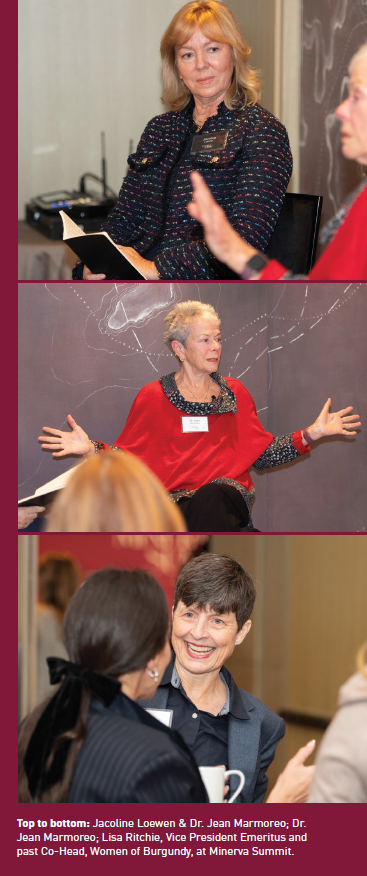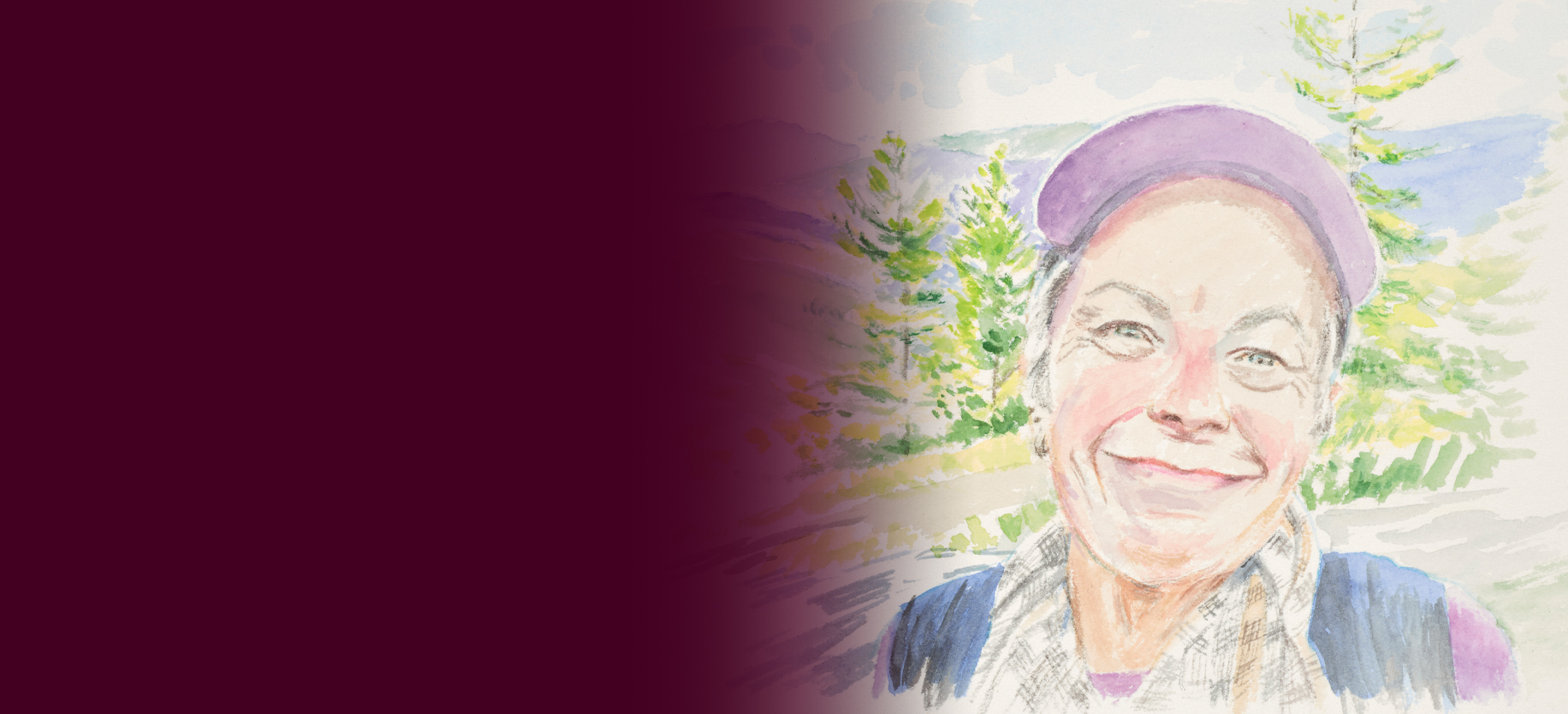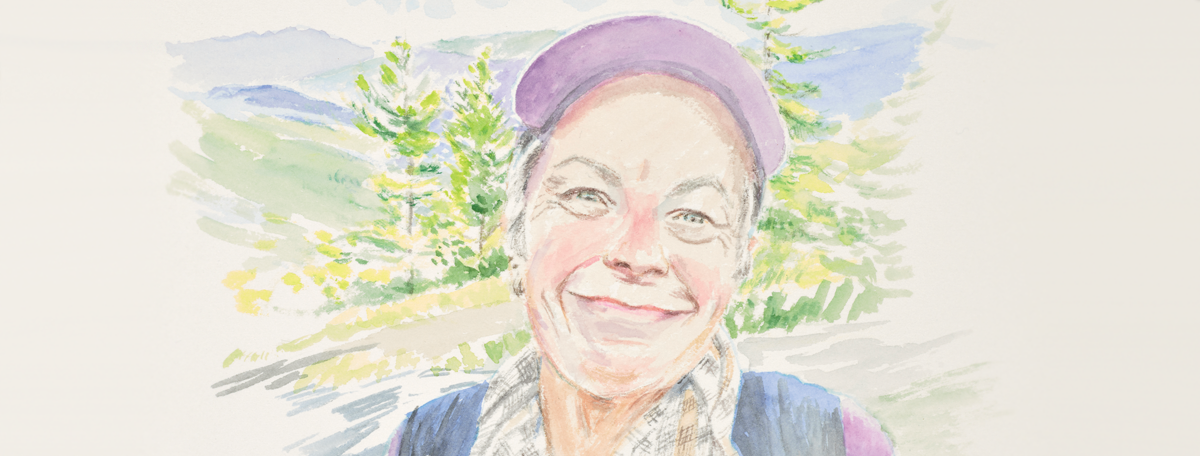How do you see the last days of your life? Leading end-of-life care expert Dr. Jean Marmoreo on the purpose and advocacy that goes into making truly informed decisions.
Dr. Jean Marmoreo is a pioneering doctor in Medical Assistance in Dying (MAiD) whose work also spans mid-life and end-of-life medicine (dr-jean.com). She co-authored the book, The Last Doctor: Lessons in Living from the Front Lines of Medical Assistance in Dying. In conversation with Jacoline Loewen, Burgundy’s Director of High Net-Worth Relationships, she delves into Canada’s world-leading efforts in MAiD, how end-of-life care differs for men and women, what women need to know to make informed decisions about their health care, and how they and their loved ones can advocate for their needs.
Jacoline Loewen: You are one of the first doctors in Canada to practice MAiD. Tell us about where we are with it in Canada.
Dr. Jean Marmoreo: Canada has set the model for the world on how to do MAiD well—not because we invented it, but because we’ve followed the lead of countries that came before us and adapted the program for a nation of over 40 million people. We have a bigger population, more diversity. We are spread out with more remote areas, and we have complex issues regarding accessibility and service in Canada. Despite these challenges, we’ve managed to put together a model of care at the end of life that gives people a choice in how they end their life. This is a model we can be truly proud of.
Only 5 percent of the population, at best, will ever opt for MAiD. It relates to hope, values, and how people pursue their lives and goals. The other 95 percent of the population will need end-of-life planning, including identifying available resources, determining what to access, making financial plans, and communicating your wishes to your family, friends, or community.
“Despite these challenges, we’ve managed to put together a model of care at the end of life that gives people a choice.”
JL: Dr. Peter Attia, the Canadian doctor who co-wrote the book Outlive, has research that shows 90 percent of people want to die at home, but 80 percent die in a hospital, hospice, or care home. What’s more, 80 percent of men die married or with a caregiver/spouse, while 80 percent of women die alone. We need to pay attention to this as women and think about financial considerations and providing for ourselves. Do you find a difference regarding MAiD for men vs. women, and the decision-making around it?
JM: Two-thirds of people choose MAiD because of cancer, which falls under Track One: your death is foreseeable. In that Track One population, progression typically goes from cancer diagnosis to cardiovascular diagnosis, followed by respiratory, kidney, and, lastly, neurological deficits. Currently, the average age for Track One patients is about 77 years.
However, the older you get, the more likely you will encounter women who are 94 or older. Their request for assisted death comes from a range of deficits and decline in managing their activities of daily living. They have more comorbidities, conditions that affect us all as we age. So heart, kidney and lung conditions, along with arthritis and chronic pain. For many of these women, it is more the loss of independence in their daily life, the quality of life they are living. They have lost friends and family; they are more isolated.
COVID-19 underscored that isolation for people living alone or in long-term care homes. The forced isolation devastated elders in terms of what makes their life worth living. They lost engagement, being able to eat meals together. What happened in long-term care homes underscored the value of having a community, whether it’s a community in your home, a community of your friends, or a community of people who are just around you. This is what gives value to living. People do not do well living in isolation.
When you look at a 94-year-old and she says, “I’m done. I want to go. I’ve had a good life. I’ve had a rich life. I’m alone now. My family’s dispersed all over the world. I don’t have the purpose I had before and I’m tired”—tired becomes a big part of it. It’s not cancer, it’s not heart failure. They are tired of living because they have lost quality in terms of what their past was and what they’ve valued. They haven’t got the energy to push anymore. That’s what you see in older women that you may not see in older men, because older men often don’t reach this stage.
 JL: Let’s talk about developing your own unique playbook. The number one thing is to start by having a plan.
JL: Let’s talk about developing your own unique playbook. The number one thing is to start by having a plan.
JM: It’s challenging to persuade somebody who’s anchored in their family home to think about moving into assisted living or a different community of care. We’re starting to rethink what housing for a community of aged people should look like—today, for many, the only options are retirement homes and long-term care nursing homes.
Long-term care homes received a bad rap during COVID because 95 percent of the deaths in the first months happened there. What didn’t get talked about is that the publicly funded long-term care homes performed better than the private homes in early COVID. The reason they did better was because they had a stable care-provider population. They didn’t have workers going to three or four different homes, being paid minimum wage, and lacking a good pension plan.
When the provincial government did their study and said, “This is dreadful. We need to make sure that everybody in a long-term care home gets 3.5 hours of personal care per day as a standard,” the publicly funded long-term care homes were already doing 3.8 hours. They were already ahead of the mark in what personal-care service should be. What does that mean? It means somebody helps you get dressed. Somebody makes sure you’ve got lunch in front of you, and if you need your food cut up, it will be done. They make sure you’ve got a spoon when you can’t handle a fork. They make sure your glass won’t tip over and spill water on you. These are activities of daily living and personal support work that nobody talks about.
JL: A necessary part of planning is choosing the right advocate. My mother would like to have MAiD, and I told her, “I cannot help you here. You need to get someone else to advocate for you.” You must be honest about these things. Now one of my sons has been assigned her power of attorney for care. I feel the advocate should not be a family member who is going to benefit from your wealth. There’s a conflict there.
JM: With MAiD, you can’t just dial a death. You must meet eligibility criteria: You must have a serious disease, illness, or disability; it must be causing grievous and irremediable suffering; you must have discussed options available to help ameliorate or ease you through the pain; and you must decline those options, saying, “That is not acceptable to me.”
I can’t put a suffering monitor on you and say, “You don’t meet the criteria because you’re only at 65 percent of suffering.” If it’s grievous and irremediable to you, it’s grievous and irremediable. Nobody questions that. The coroner doesn’t question that. I don’t question that as a doctor. It’s you who is suffering, not me.
You must go through the criteria of eligibility to be approved. This process requires two clinicians who are not related in any way to each other in a reporting capacity, and they cannot benefit from your estate. You cannot have any financial arrangement. It requires only one witness, and there is no waiting period for a Track One patient to have an assisted death. But it does require, in terms of my assessment, that I do not sense coercion. If I sense there is any pressure on you to proceed with this because the family is going to suffer—for example, if you continue costing them a quarter of a million dollars a year in your care—you will not be eligible.
JL: Let’s discuss the hospital readiness kit. You have that big red envelope, and it’s got your power of attorney for care, your medical history. What else do you think should be in there? And where should people keep it?
JM: People who end up in hospital don’t have instructions strapped to them that say, “Don’t resuscitate me.” People say to me, “I’ve named a power of attorney for care, and they know that I do not want to be intubated.” I say, “That’s fine, except when first responders arrive at two in the morning.”
The duty of care is profound. First responders do not make these decisions. They must take you to a hospital. At the hospital the first thing they do is ask, “Who’s their power of attorney? Where do we find that? Is it in their wallet?” They have been brought in at two in the morning, they’re unresponsive and in their pajamas. Often, it’s not clear who has the power of attorney, or if they have a health card with them.
People do not have a choice at this point. The person receiving you at the hospital has a duty of care to resuscitate. And they will do that unless someone in the family arrives to say, “Wait a minute, hold it. Dad doesn’t want resuscitation. I am the daughter, and I have the power of attorney of care for my father.” But if you say, “I’m the friend next door,” you will not have that choice.
So, it becomes important for people to say, “I am 92 and I do not want to be resuscitated.” Today, when you tell your family doctor or nurse provider, “I want a DNR put in place for me,” it is a processed document and sent to the fire chief and emergency medical services; it’s now an online document. When they get a call for help, they can pull the record up and say, “There’s a DNR here.” Then the first responders coming through the door know that Joe or Mary has, in fact, effectively documented a DNR order.
JL: The next step in the playbook is communication. You always talk about having that family dinner conversation.
JM: It’s always a wonderful opener: “Hello, let’s talk about dying.” It isn’t an easy conversation and there’s never a right moment.
What I do is remind myself that it is about me. This means it’s me who needs to initiate the conversation. I’m the one who has to tell the kids, “Look, we need to talk about this because it matters to me. Maybe you don’t want to hear it, but I have to take this opportunity.” In the end, it’s me who has to be willing to say, “I need to talk about this, and I’d like to talk about it with the whole family so that we’re all on the same page about my wishes. Because what you think is best for me might not be the same as what I want for me.”
JL: Let’s consider the final moments: the last day, the last words, the last doctor. I’d like to end the conversation in a positive way: You have a knapsack story that’s a useful way to think about how to make that last day beautiful.
JM: I had gone deep into MAiD, taking on incredibly difficult scenarios and cases. I was recognizing too late that to take a life is to increase your own moral burden. No matter what you do, if you take a life, there is a cost to the person doing it. The clinicians and nurse practitioners across Canada who take on this work do it with tremendous dedication and pride, and tremendous expectation of the highest quality of service you can give.
I was at a MAiD conference, and we were presented with the question: “What does it cost to do this?” The speaker used a knapsack, and I rolled my eyes like, “Oh no, here we go again with this knapsack story about all the little things in your knapsack that you need to pull out to help you.” She started with a broken shell from her son. Then she said, “I’m just going to keep throwing these grenades at you about what it costs you to do this work.” Every time she threw out another grenade, I gulped. At the end, when I went up to talk to her, I could not speak. I ran out.
I got home and realized after a few weeks that I had started to withdraw. I wasn’t answering the phone so quickly or engaging much. And then it dawned on me—I was the queen of backpacks. I had hiked 1,000 miles of the Appalachian Trail. I knew about backpacks. I knew about carrying your whole house on your back. I knew what it was to carry a burden and be supported.
A knapsack is your resource, it’s your kit, it’s what gives you comfort, what provides affirmation and power, and what lets you sink back into your values. I began to create my own knapsack of what I needed for my soul, what I needed to keep me going.
I’m a woodworker, and I will spend hours trying to create a perfect bowl with a perfect lid. If it doesn’t work, I keep working at it. So I have this lovely imperfect half bowl that I carry with me.
I’ve been in a psychedelic psychotherapy course where a participant, a social worker, said, “I carry crystals in my pocket because crystals remind me of the joy and value and meaning of life.” All of these physical things that you pull together affirm your value and what matters to you. Knowing what that is and carrying that with you—that is the backpack story. We all can utilize a self-mastered backpack—for comfort, for affirmation, for reassurance about values, purpose and commitment.
This post is presented for illustrative and discussion purposes only. It is not intended to provide investment advice and does not consider unique objectives, constraints or financial needs. Under no circumstances does this post suggest that you should time the market in any way or make investment decisions based on the content. Select securities may be used as examples to illustrate Burgundy’s investment philosophy. Burgundy funds or portfolios may or may not hold such securities for the whole demonstrated period. Investors are advised that their investments are not guaranteed, their values change frequently and past performance may not be repeated. This post is not intended as an offer to invest in any investment strategy presented by Burgundy. The information contained in this post is the opinion of Burgundy Asset Management and/or its employees as of the date of the post and is subject to change without notice. Please refer to the Legal section of this website for additional information.

